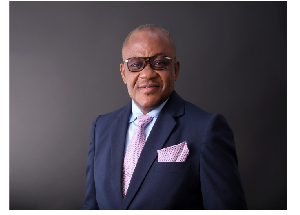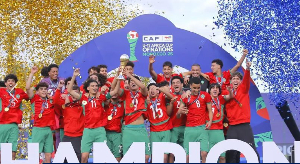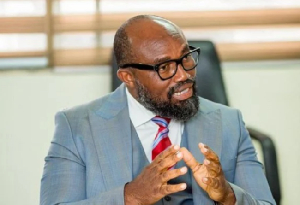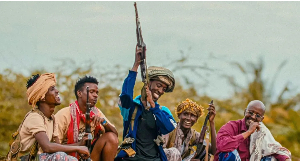By Mohammed Amin Adam
(Former Mayor of Tamale)
Email: tabat15@yahoo.com
INTRODUCTION
The government recently announced the establishment of the Savannah Accelerated Development Programme (SADA), an ambitious programme aimed at transforming the Northern part of Ghana economically and socially. The programme follows earlier interventions most of which ended with mixed results. Poverty levels are still high in the North even though substantial resources have been invested over several years now. The annual floods arising from the spilling of the ‘Bagre’ Dam in Burkina Faso have always compounded our circumstances. This has led some people to question the readiness of the North for yet another development intervention. The SADA is particularly at the heels of major development programmes introduced in the country in recent past. These are the Highly Indebted Poor Countries Initiative (HIPC) and the Millennium Challenge Account. It is therefore important to examine the relationship between the North and these programmes to create a platform for assessing the readiness of the North for SADA.
HIGHLY INDEBTED POOR COUNTRIES (HIPC) INITIATIVE
There is no doubt that the Highly Indebted Poor Countries Initiative brought significant relief to the country by freeing substantial resources that would have been paid to our former creditors. As a prerequisite for HIPC, the Government prepared the Ghana Poverty Reduction Strategy which declared the three Northern Regions and Central Region the poorest in the Country. However, although the initiative was good at the time, allocation of resources under HIPC did not reflect the poverty profile of the country. According to a World Bank document on ‘Bridging the North-South Divide’ issued in 2006, the three Northern Regions received less than 18% of the disbursements. Further, the Greater Accra with fewer districts than the Northern Region, received the greater part of the proceeds. This might be due to the use of HIPC resources in financing some Central Government projects most of which were located in Greater Accra.
The question that is often asked is – why was the North used to justify Ghana’s opting for HIPC and yet received proportionally lesser resources from the initiative? Unlike the District Assemblies Common Fund, the formula for allocating HIPC funds was not transparent and therefore was not scrutinized. Parliament approved the annual budgets of the government which also included HIPC allocations without raising the moral question posed above. Except SEND Foundation which queried the unfair distribution of HIPC resources, civil society was generally silent on this. Northern Politicians in Government and in Opposition did not also burry our differences for once and put out a strong voice for the benefit of our people.
MILLENNIUM CHALLENGE ACCOUNT (MCA)
Most of us were excited at the news of about US$540 million grant approved for Ghana under the United States Millennium Challenge Account which was also aimed at fighting poverty in the country. Unfortunately, out of the 23 Districts selected nationwide to benefit from the programme, only five are in the three Northern Regions. Sadly, not a single District from the Upper East and Upper West regions, the last two regions on the poverty league table of the country was selected to benefit from the programme. Also, the five Districts in Northern Region which were selected for the programme - Tamale Metropolis, Savelugu Nanton, West Mamprusi, Gushegu and Karaga Districts - were picked because of their proximity to the Organic Mango Plantation Project in the Savelugu Nanton District and so dubbed the ‘Northern Zone’ for Agricultural Diversification.
One would have thought that the many other traditional cash crops such as Sorghum and Sheanuts would have been prioritized. If they were considered as well, the Upper East and West Regions noted for these two cash crops would have benefited from the project. Was is therefore due to poor feasibility or the belief that organic mango plantation could reduce the poverty levels of the people faster than the other crops?
SAVANNAH ACCELERATED DEVELOPMENT AUTHORITY (SADA)
Apart from the Northern Scholarship Programme introduced by Dr. Kwame Nkrumah, the SADA is by far the most comprehensive programme targeting the overall development of Northern Ghana in our history. The use of ‘Savannah’ which justifies the extension of the programme to cover parts of Brong Ahafo and Volta Regions however raises a worry as to whether the three Northern Regions will again be treated fairly under their ‘own’ programme. But it will also be selfish to ignore the level of integration between the economies and culture of the Northern Regions and parts of Northern Brong Ahafo and Volta Regions. In fact in these parts of Brong Ahafo and Volta Regions, most of the DCEs and some members of parliament have Northern inclinations.
The SADA is particularly interesting for its all-encompassing form. That is, it looks at agricultural development, industrialization, economic and social infrastructure. These goals are achievable especially with the construction of the Bui Hydro Electric Project which will ensure security of power supply needed to fuel the laudable projects being pursued particularly the industrialization component. Of interest also is the level of consultations that heralded the programme. It could therefore be argued that SADA has significant Northern input covering the voices of the political leadership of the North since the beginning of the Mole Series in early 2001 (a group of the Northern Political leaders), traditional rulers, civil society organizations, NGOs, and the academia. Indeed, the two leading technical brains behind the programme, Dr. Suley Gariba and Dr. Jebuni, are some of the best brains form the North. We therefore will not have any excuses if the SADA does not meet its objectives of a revolutionary transformation of Northern Ghana.
LOST OPPORTUNITIES
Already, the North over the years squandered several opportunities to develop our regions and lift them out of the poverty web. This may be the reason the author is wondering whether the North is positioned well for SADA. Some of the lost opportunities are highlighted here.
NGO Capital of Ghana
The North is regarded the NGO capital of the country apparently due to the large number of NGOs operating in the three Northern Regions. Some of these organizations have supported educational and general social development programmes. Others have been involved in capacity building, local governance and micro-finance activities. Considering the number of NGOs and the amount of resources they have injected into rural and poverty reduction interventions, it is expe cted that the high levels of poverty in the North would have reduced significantly.
What most people do not know is that most of the NGOs are money-making organizations established by self-centred individuals through whom donors pass substantial amount of money. Some of these individuals have enriched themselves at the expense of the poor people. The attitude of these individuals has adversely affected the North since most donor agencies realizing the injustice meted out to the people, have frozen further release of funds to the NGOs. Now, some of the fake NGOs have folded up. The sad aspect of this development is whether donors are able to identify genuine NGOs and support them. This development definitely has not been in the interest of the people. But who is to blame since the proprietors of these NGOs are also from the North?
Development Partners
The long presence of development partners in the North has been felt by the various programmes implemented in the North for some time now. Programmes such as the District-wide Assisted Project (DWAP) by CIDA, Northern Region Poverty Reduction Programme (NORPREP) by IFAD, the Community Based Rural Development Programme (CBRDP) by the World Bank, the European Union Micro Projects and many others have contributed significantly to reducing poverty and deprivation in most of Northern Ghana. Whether the success of these interventions is proportional to the resources deployed is another question to answer. Many reasons have been given to explain this. My own impression is that relatively lesser resources are spent on monitoring and evaluation activities which are very important components of development interventions. Such development evaluations are also usually ‘cooked’. Thus, the right information about the northern situation is always not told because of the poor analyses of the impacts of these interventions. Therefore the local collaborators of these partners have contributed to the problems. Some of them even ‘cut and paste’ various reports to development partners who do not pay attention to details but are rather interested in statistics, which are doctored for them. In addition, the interventions by development partners have not been coordinated over the years as each development partner wants its flag to be associated with projects they implement or finance.
Investment Opportunities
There is evidence that the North is rich in minerals such as gold and iron ore. We are also blessed with many cash crops and livestock. Land is abundant and many tourism landmarks like Mole Game Reserves and Paga Crocodile Pond abound. In spite of these resources, there is little or absolutely no exploitation of most of this wealth. According to the Ghana Investment Promotion Centre, less that 0.1% of foreign investments attracted to the country go to the North. This does not only show the lack of attention on wealth creation in the North but also a failure of the country’s development and investment policies.
Most of the fast developing countries have succeeded because of decentralized investments. Other countries have deconcentrated investments from their main cities to the country-side where there is abundant land, raw materials and cheap labour. At the national level, the intervention by the state to increase access of local investors to long-term capital through the establishment of the Export Development and Investment Fund (EDIF) has not helped either since the number of northern investors and projects who have benefited from EDIF since its inception is quite negligible. This might be due to the low capacity of local investors to present viable business plans to source the fund. But whose duty is it to build the capacity of local investors to utilize public support programmes?
It is heart warming to note that industry based organizations such as the Association of Ghana Industries and the Ghana Shippers Council have opened branches in the North and it is expected that they will share lessons with their northern members to enable them get access to investment opportunities. Within the last three years, Tamale especially has become the financial capital of the North due to the opening of branches by many banks in the city. This offers significant investment opportunity for the people.
Chieftaincy and Ethnic Conflicts
One of the reasons for lack of investments in the North has been attributed to the numerous conflicts in the Region. The North became unattractive to business people including indigenes who preferred to set up their businesses elsewhere for fear of being consumed by conflicts. The Northern Peace Initiative recently identified some 15 major conflicts which have undermined the development process of the North. These conflicts have led to loss of lives and property as well as earned for the North a dented image. The North has therefore been associated with insecurity where public resources meant for development have been used for conflict resolutions and maintenance of peace. Fact is, both investment and development go to places where their security is assured. There are records to show that Coca-cola Ghana Limited, Swepps, and Boeing International all declined their earlier interests in the North because of insecurity among other reasons. Conservative analysts have argued that the North is fifty (50) years behind its development as a result of the losses it suffered from conflicts. This is in spite of the deliberate underdevelopment programmes of the colonial administration.
IS THE NORTH POSITIONED WELL?
Now it is right to ask whether the North is positioned well for SADA. In view of the hunger of the North for economic transformation and accelerated development, it will be suicidal for any argument advanced in favour of further postponement of the `implementation of SADA. Therefore no one will risk saying that the North is not positioned well for the programme. It is also unethical and an injustice to the development aspirations of the North if we pretend that there are no serious challenges which may undermine the smooth and successful implementation of the programme judging from our experiences of earlier development interventions.
Human Resource Development
The low illiteracy rates of the three Northern Regions are alarming. The rate for Upper West is even below the national average of 56%. In contrast, the population growth rates of the North are above the national average of 3%. The implications are not amusing as more and more children are out of school despite the progress made in the FCUBE programme. SADA’s goal of industrial development will therefore be a mirage if we continue to have large sections of the society outside the literacy range. Whiles general literacy should be supported through the construction of new schools, motivation for teachers and scholarships for brilliant students to seek higher education, of particular interest to the success of SADA is technical education and agricultural technology training. Sadly, technical and vocational education has not been encouraged over the years whilst most graduates of Junior and Senior High Schools have never seen technical education as viable alternative to their aspirations. The problem now is who will constitute the factory hands and the technicians? What about skilled personnel required by the modern high-tech industrial model of development? It is important to formulate a programme that will see a percentage of students sponsored to study in some technical education both here and abroad to constitute the first batch of factory hands and technicians to usher in the industrial programme under SADA. If those graduates gain employment or set up their own ventures, other young ones will be encouraged to pursue technical education and thereby put the North on the path to economic growth. The Industrial Area in Tamale as well as those of Wa and Bolga should be transformed into ‘Technology Parks’ with modern equipments and in collaboration with the Polytechnics to train both in-school and out-of-school young people to push the industrial agenda. The Park will also serve as market for ‘spare parts’ and serve not only Ghanaians but also those of our neighbours.
Poor Economic and Social Infrastructure
It is true that the state of infrastructure in the North today is not good. The road network, telecommunication, electricity and good drinking water in most of the rural north are inadequate and therefore provide a disincentive to investments. The state of our social infrastructure such as hospitals and schools are also not the best. These are serious challenges. There cannot be poverty reduction and wealth creation without the necessary infrastructure to support it.
To begin with the infrastructure programme of SADA, the following landmark projects must be prioritized. Tamale Airport – The programme to transform it to international status should be pursued. Already the run-way has been expanded to meet international standards; but other facilities are required to make it truly international. The Airport should be declared as the Cargo Port of the country. With the In-land Port at Kumasi and the Tema Harbour in Accra, and Tamale as a Cargo Airport, business will be spread across the country depending on the commodities exported/imported and their destinations. This will also facilitate export of cash crops and other non-traditional exports which will be developed under SADA. It will also promote economic integration with our neighbours such as Burkina Faso, Ivory Coast, Niger and Mali. This could also attract factories including those in packaging and transport operators to the Tamale Airport Area and thereby create more employment opportunities for the people. Thus the government’s plan to extend railway lines to the North will become meaningful.
(i) The Tamale Teaching Hospital and the Regional Hospitals of Bolga and Wa – The renovation and/or reconstruction of the Hospitals is long over-due. In the case of the teaching hospital, efforts in recent past could not bear fruits since the money required for the project could not be raised which adversely affected it. The Hospital as a referral centre would serve the three Northern Regions as well as raise funds from cases coming from our neighbouring countries. (ii) (iii) A new University for Medical Sciences – Due to the multiplicity of diseases in a poverty stricken area of the North which poses serious difficulty to the health authorities coupled with the refusal of doctors to accept postings to the North, the multibillion cedis modern Tamale Campus of the University for Development Studies (UDS) together with the Teaching Hospital (when rehabilitated) should be used to set up a new University for Medical Sciences. This will free the UDS to concentrate on Advanced Agricultural training and Integrated Development Programmes. The new University will be able to concentrate on training Medical Doctors, Nurses and allied Medical Staff for hospitals and clinics of the three Northern Regions and if possible train medical professionals for exports to other countries. Whiles this may sound ambitious, it is worth looking at it dispassionately.
(iv) Rehabilitation of factories in the three Northern Regions which have not been operating such as the Meat Factory at Zuarungu, and the Rice Mills in Tamale. New factories for Sorghum processing for use by the Breweries should be set up in the Upper West.
(v) Major roads such as the Bolga – Wa road and Tamale- Wa road which link the three regions should also receive immediate attention. (vi) Psychological Poverty For a long time, some of us from the North have tried to glorify poverty as if we are condemned to be poor. This mindset has perpetuated our circumstances and has almost enslaved our potentials and abilities. The truth is that most of our people are always expecting free things. There is hopelessness and despair written on the faces of people. Some have even resorted to religion as the panacea to their problems. Karl Max’s famous assertion that ‘religion is the hope of the hopeless, the spirit of the spiritless, an opium of the masses’ could therefore not be by accident. But the reality is that no one is naturally made poor. In fact, no religion preaches permanent dependence. This mindset has even influenced some of the people who are rich and own large herds of cattle, sheep and farms, to be captured by the dependency syndrome. They ‘worship’ their wealth whiles their children are sent off from school for non-payment of school fees.
If we have to fight poverty in the North, we have to first free the mental poverty of our people. They need education and awareness. We need to develop the ‘can do’ attitude in them. Banks should also introduce packages that allow those who have wealth to save in kind (cattle, sheep, and guinea fowls, etc}. Thus, savings culture and investment in human capital should be promoted among the people.
Indigenization of Development
There is the argument that no one develops another person’s land. The United States under President Obama is urging Africans to solve the problems of our continent. Therefore, those from the North must have primary responsibility to develop the region. Unfortunately many Northern entrepreneurs and business people prefer to set up their operations elsewhere due to fear of the ‘known and unknown’. A few Northern Business men in the South and the Diaspora have however shown the way in examples such as Mariam Hotel, Stanbic Bank, etc.
If we are to build local businesses, a percentage of SADA should be put into a Business Development Fund and disbursed to local based business people to set up or expand their operations. Part of the money will be paid to consultants to prepare viable business plans and enhance the capacity of the businesses. When indigenous business people are supported, they are strengthened to enter into partnerships and joint ventures with others outside the region.
Peace and Unity of Purpose
The most noticeable challenge facing the North and likely to undermine SADA is the absence of peace in the North especially in Dagbon and Bawku. Whiles both justice and peace are being pursued to resolve these conflicts, it is important for the people to know that they should not be at the expense of development. Underdevelopment breeds conflicts and conflicts deepen underdevelopment. Both justice and peace are necessary for development but it is also possible to pursue justice and peace alongside development activities. We must be able to achieve peace, justice and development simultaneously.
There is also disunity by regions. The people of the North must know that we are the same and our friends from the South do not see any differences among us whether from the Upper East, Upper West or Northern Regions. Our development challenges are the same and the solutions hopefully are not different. We must therefore find common grounds to heal our wounds together. To this effect, the creation of an annual All Northern Peoples Conference is a matter of urgency. This conference should have a development wing which will monitor the implementation of SADA to ensure that the objectives of the programme are not deviated.
Politicization of Development
One obstacle that has often hindered the success of development interventions is politics. All political parties wish to justifiably claim credit for development initiatives. However, since all governments of Ghana since independence have contributed positively and negatively to the northern problem, it is important that the influence of politics on a major development programme such as SADA is strongly resisted.
Fortunately, the two major parties in Ghana, the New Patriotic Party (NPP) and the National Democratic Congress (NDC) have both contributed to the development of SADA. Whereas the NPP established the Northern Development Fund (NDF) through an Act of Parliament, and was about setting up the Northern Development Authority, the NDC is establishing the Savannah Accelerated Development Authority both of which are geared towards the same goal. Indeed, the NDC has started moves to collapse the two initiatives into one especially since seed money was already provided for the NDF. It is instructive to note also that the technical people who developed SADA were the same people behind the NDF and one of them, Dr. Sulley Gariba has actually been appointed by the President as Advisor on SADA. This spirit should guide the implementation of the programme so that parties will come and go and yet the Northern development priorities and programmes will continue.
CONCLUSION
The three Northern Regions cannot wait further for a comprehensive development intervention that will facilitate economic transformation and poverty reduction. Therefore, the establishment of SADA has come too late than never. Our people are amused at this bold step but like most major projects, due diligence is required and backed by broad consultations to ensure they are successful. SADA will hopefully take off next year and our people must be ready for it. It is neither going to be a Christmas gift nor a political reward. It is borne out of the will of Ghanaians through its government to accelerate the development of the North and thereby enhance its economic integration with the rest of the country. Therefore whiles we are excited about this initiative, we must also be ready to accept responsibility for its successful implementation or we sit aloof and remain perpetually behind the rest of the country.
Opinions of Thursday, 8 October 2009
Columnist: Adam, Mohammed Amin














